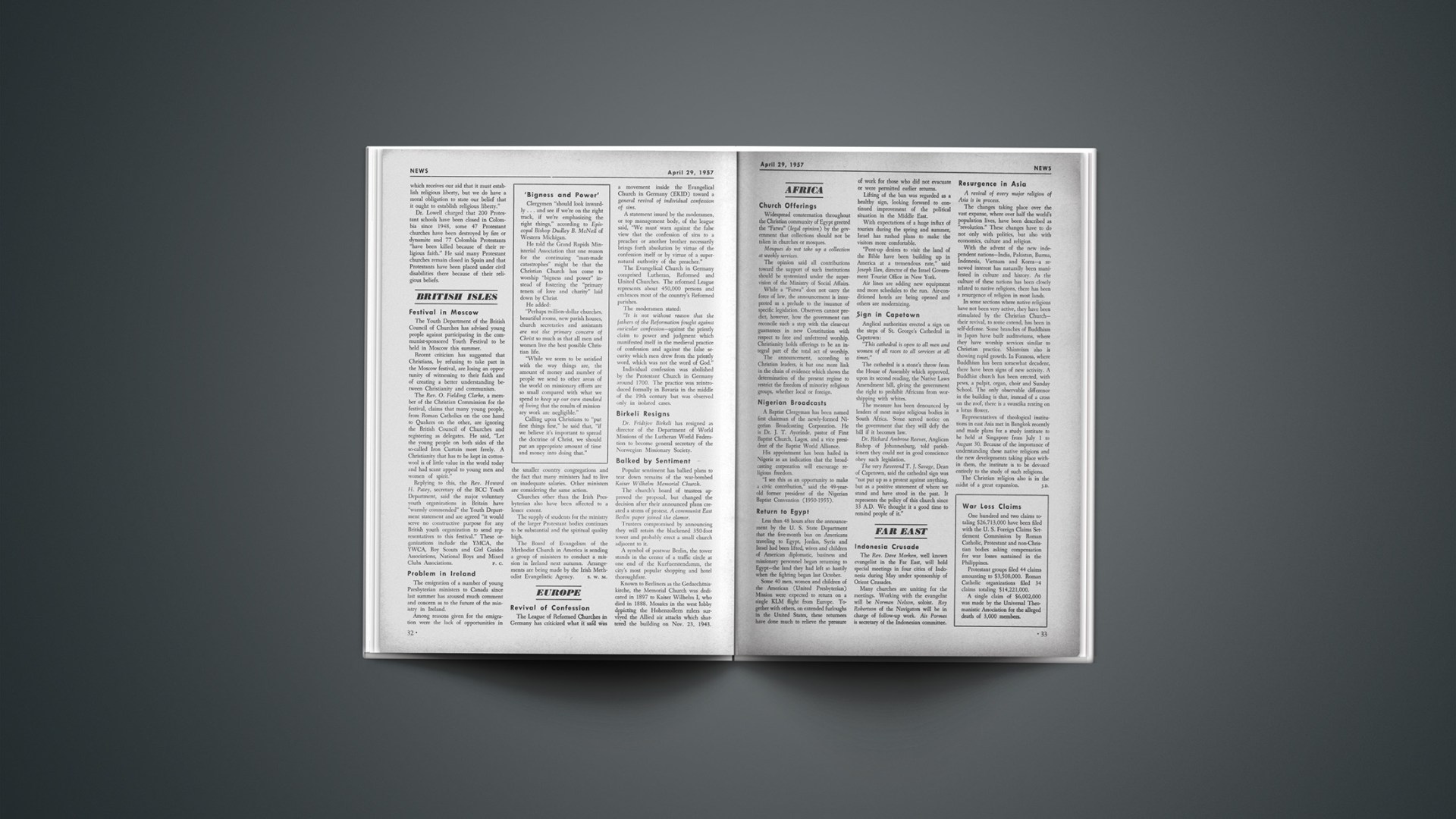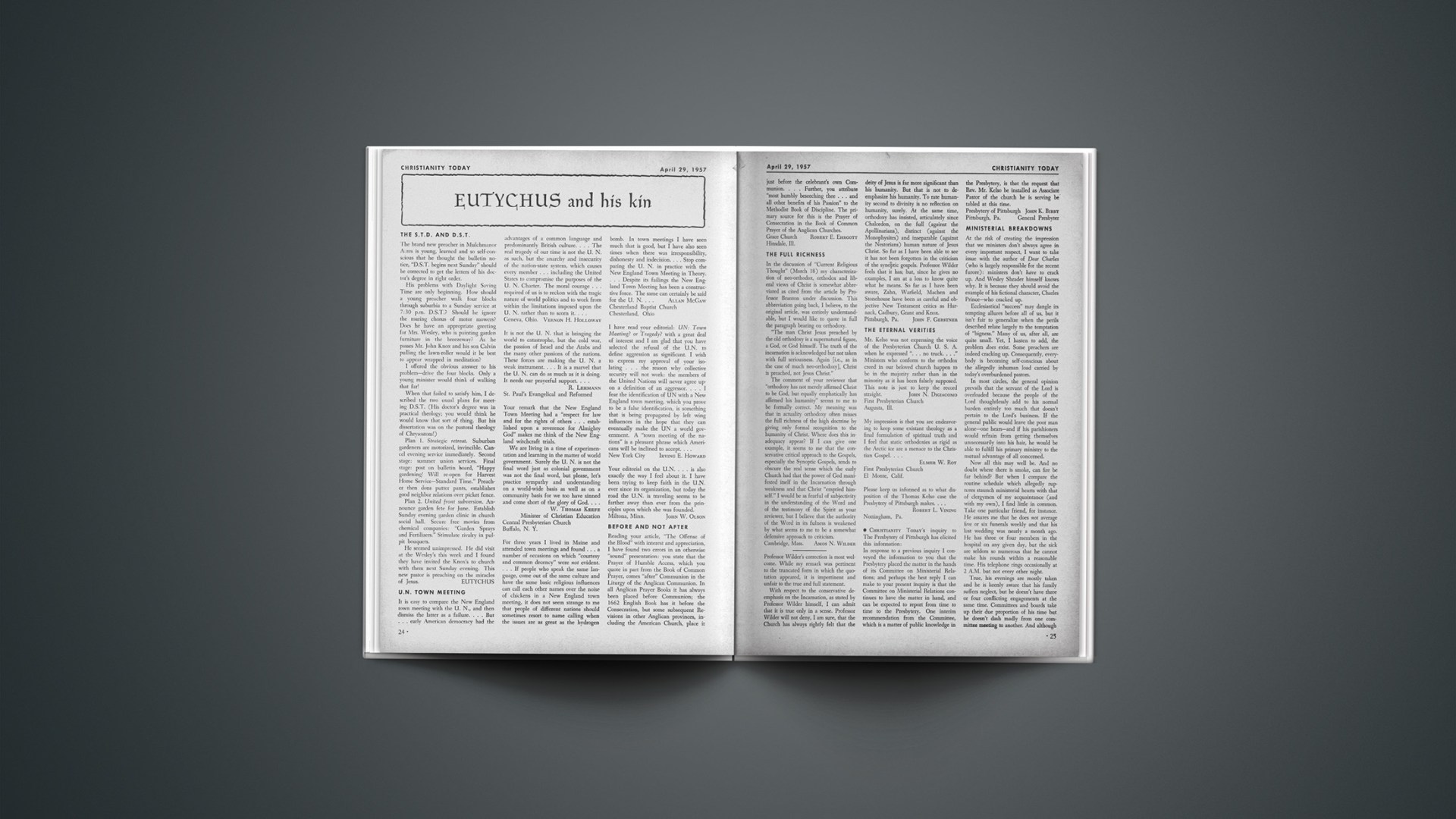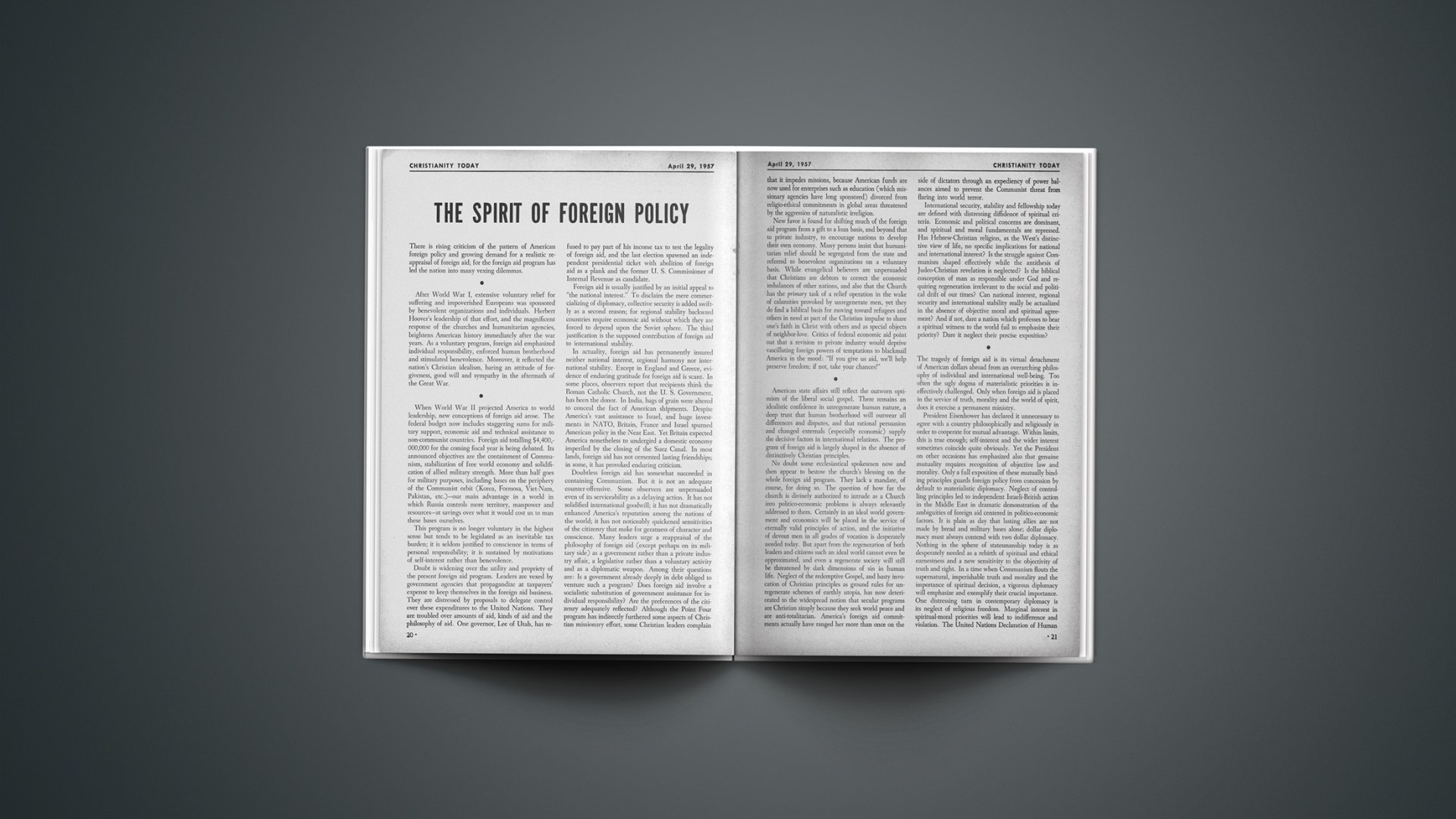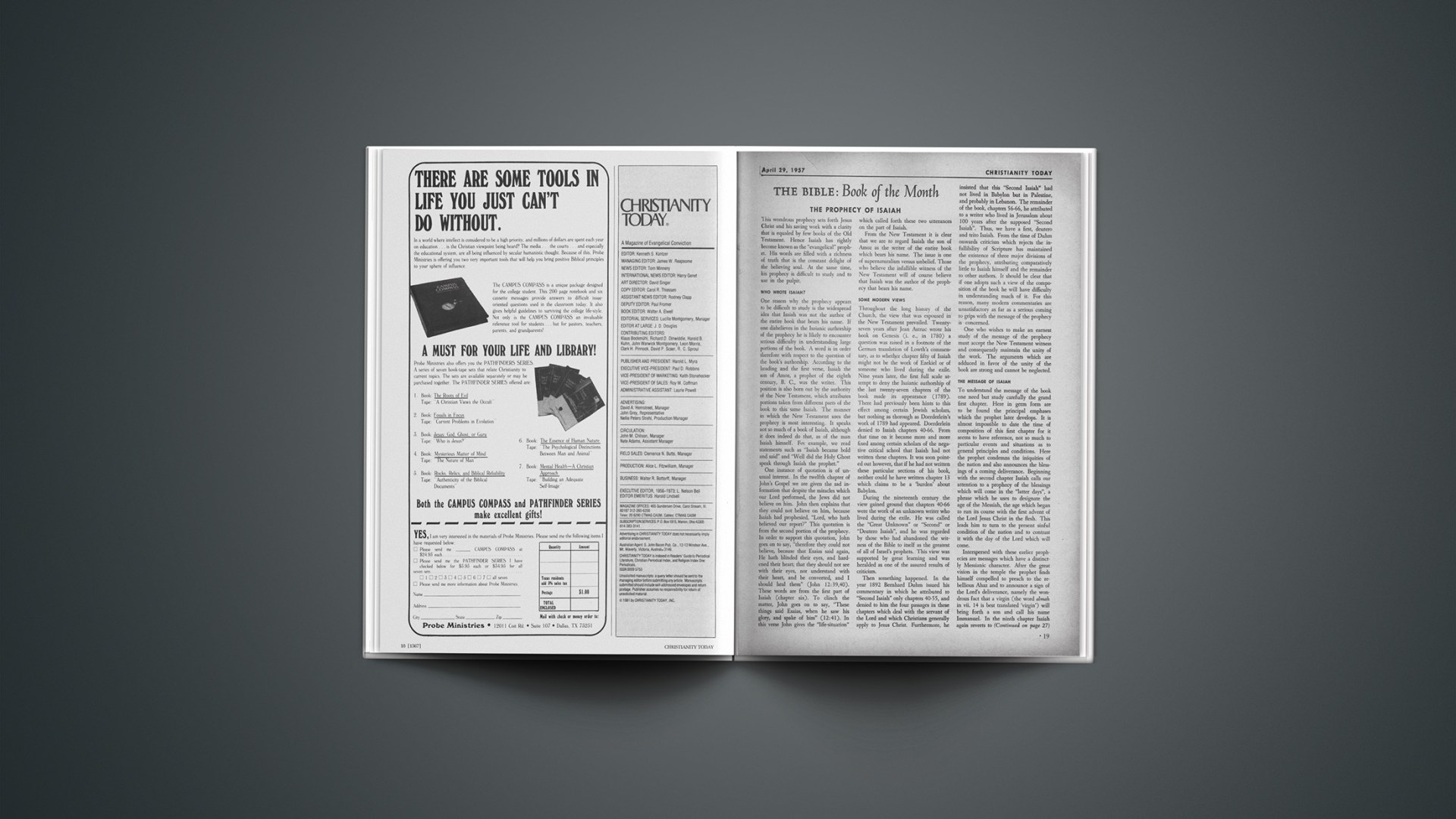In the current issue of Pastoral Care attention is called to the centennial of the birth of Sigmund Freud (1856–1939). The Rev. Kenneth H. Rogers, Ph.D., tells something of the life of the famous Austrian Jewish psychoanalyst and his present significance for religion. Freud was a man of deep feeling who seldom revealed it, although control was often difficult for him. He was a good husband and an exemplary father of his six children. Professionally, he began as a neurologist and achieved distinction before he turned his attention to hypnotism in 1895. “This led to the use of the method of ‘free association’ as a cathartic technique in working with neurotic patients. The great turning-point came with Freud’s intuition that ‘free association’ was not really free, but determined in every possible respect.”
The above experience led to his first fundamental principle in psychoanalysis, namely, that all mental phenomena are completely determined. All abnormal behavior was but an inhibition or distortion of this normal deterministic pattern; this was his derivative second principle.
The nature of this psychological deterministic pattern as being oriented in the libido, which is usually taken as basically a sexual drive, has been regarded as uncongenial to Christian thought. Certainly Freud himself was hostile to religion. But Dr. Rogers feels that we may distinguish between the man and his method and use the latter for religious purposes. (One cannot help feeling that the religious Freudians are betraying a “sacred” trust of their dead master.) In any case, the enlightening article is rather provoking in not explaining quite what this area of cooperation between psychoanalysis and religion (especially Christianity) is. A system developed by an intelligent man who used it in lieu of, or against, religious theories, cannot now be taken captive by religion without some more convincing justification than is here given.
The question of the nature of God and gospel makes the brilliant analysis of the present trend to religion on college campuses, by Lewis W. Spitz (“Jerusalem and Athens: A Tale of Two Cities” in The Lutheran Scholar, January 1957) all the more intriguing. After a survey of considerable evidence of a return to religion in the colleges, Dr. Spitz warns: “There is, it should now be obvious, no cause for a premature celebration of Christendom over the return to religion on the campus. But therein lies the challenge.” A return to religion may be good, depending on what religion. The professor then makes some suggestions especially appealing to Lutheranism which he calls American Protestantism’s “secret weapon” (quoted from Professor Sidney Meade).
Speaking of Lutheranism reminds us of a strong statement that this theology, though it has sometimes adopted episcopal government, has never regarded it as essential (Ragnar Askmark, “The Lutheran Church and Episcopal Succession” in The Lutheran World, September 1956). At the same time the Episcopal Church organ, Living Voice, gives notice that the Church of South India is in danger precisely because it is apparently playing free and loose with this essential of the church (April 7, 1957). “A warning that the Episcopal Church is faced with decisions that might well lead to serious rifts was expressed by the Rev. Canon Albert J. du Bois, executive director of the American Church Union. Canon du Bois … said he was referring specifically to recommendations concerning the relationship of the Church to the pan-Protestant Church of South India.…” In the ensuing report, evidence of departure from the Episcopal view of the bishopric plus laxity in doctrine are the chief grounds of the present anxiety. [The Ordinal of the Book of Common Prayer requires unequivocal adherence to Christian doctrine, belief in Catholic sacramental doctrine and belief in Catholic Orders—requirements which the C.S.I. ministry did not fulfill.] Canon du Bois said his criticism was offered along the lines of the purpose of the ACU “to uphold the doctrine, discipline and worship of the Episcopal Church; to extend the knowledge of the Catholic faith and practice of the Church,” and “to maintain unimpaired the position of the Episcopal Church as an integral part of the whole Catholic Church of Christ.”
These two notes, a Lutheran insistence on the dispensability of episcopal order and an Episcopalian insistence on its indispensability, point up the fact that the acids of modernity have not eaten away this ancient bone of contention.











